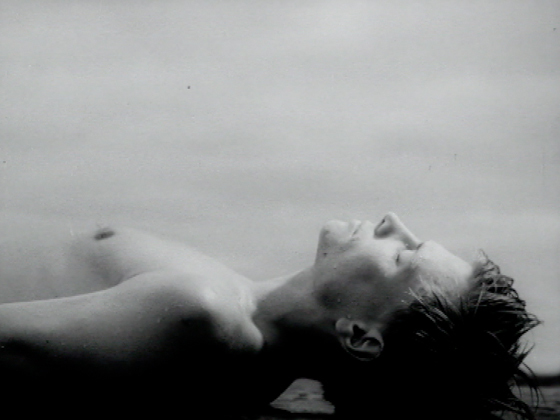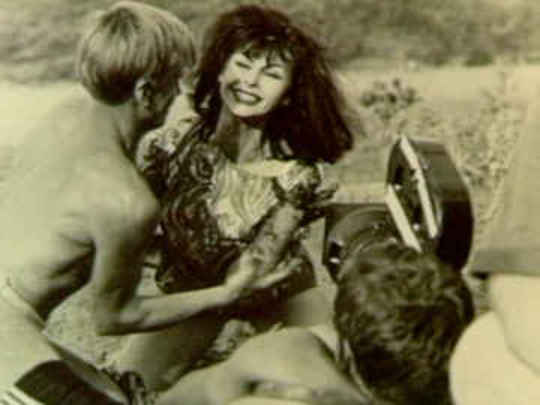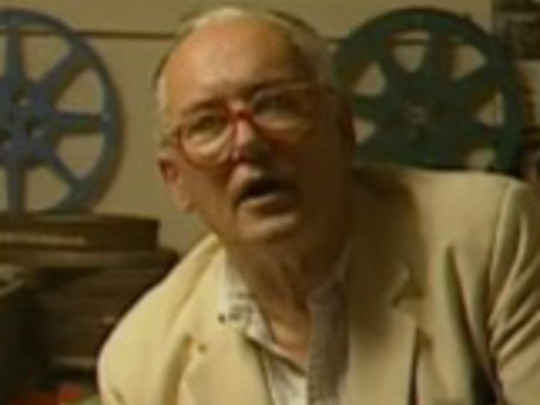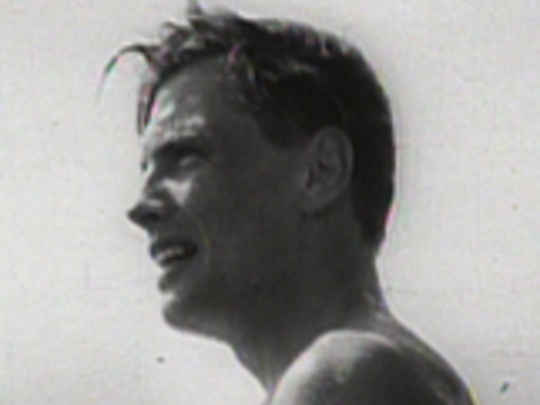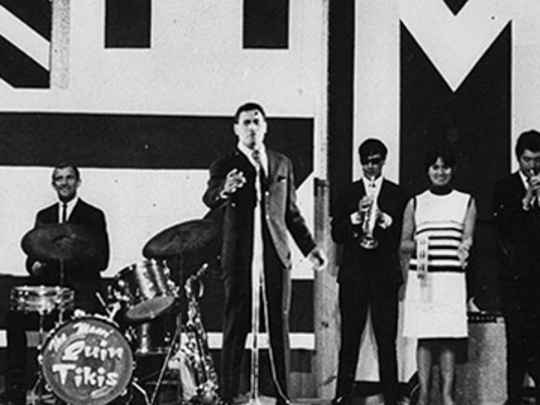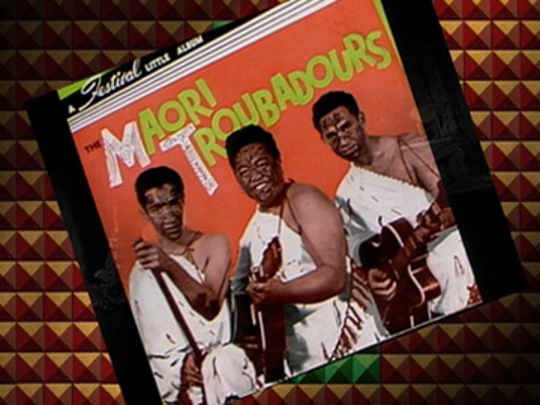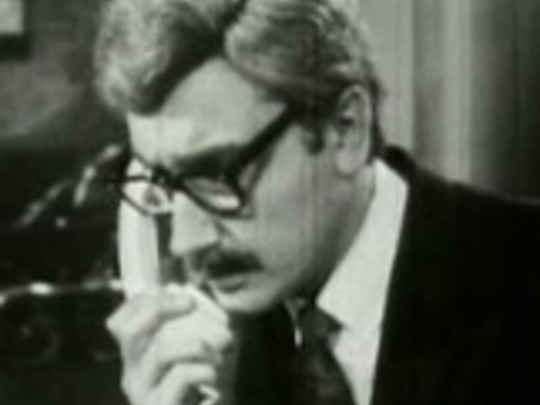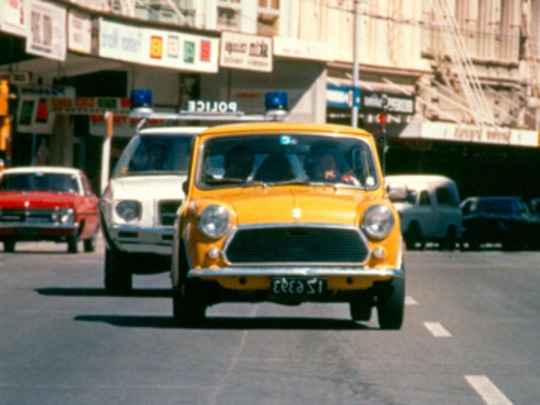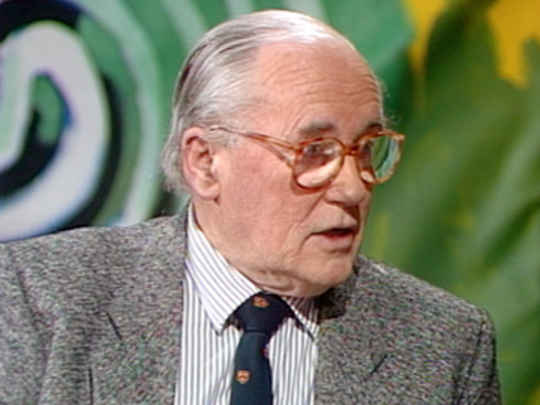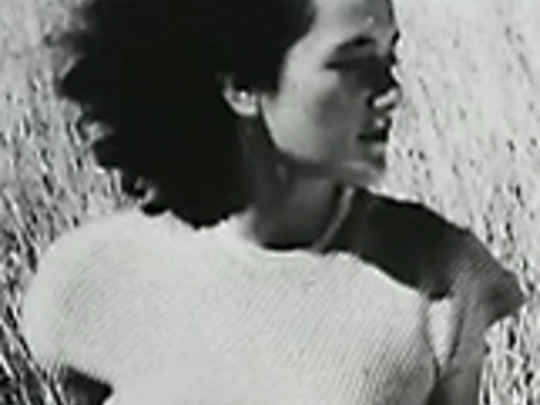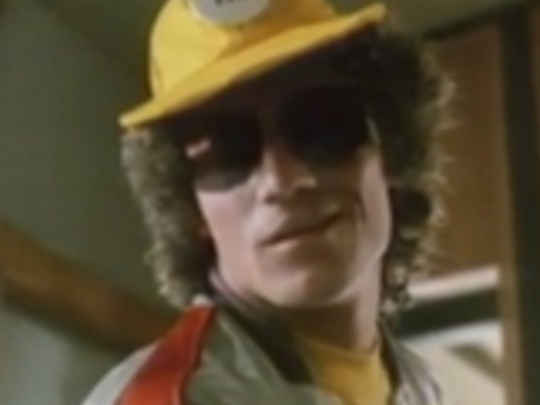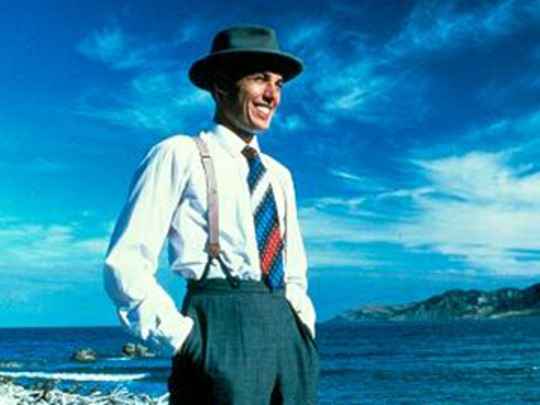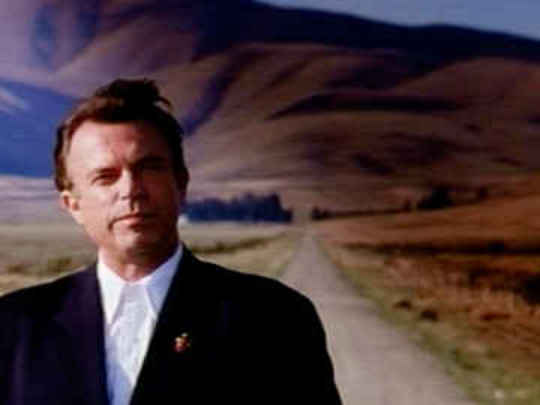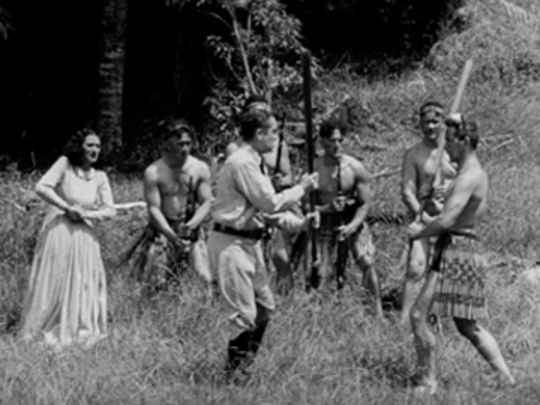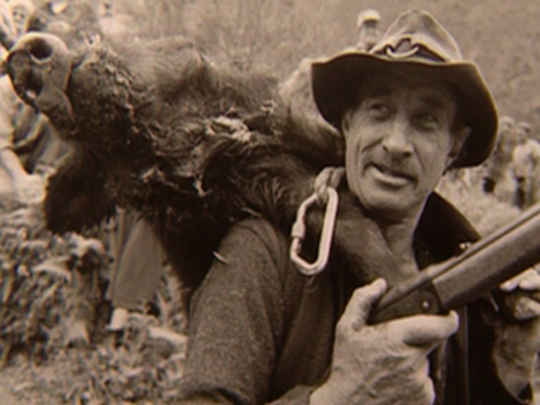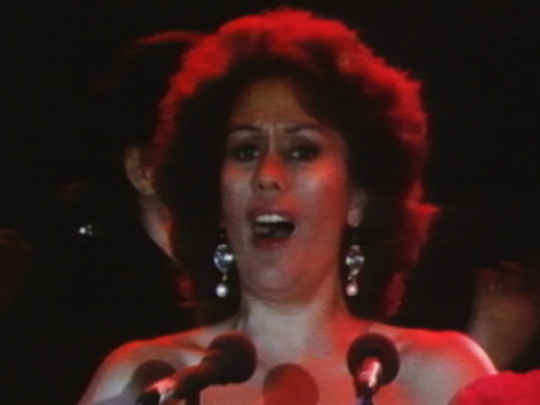The picture has a brooding, dream like quality, but it lacks any real sense of urgency in the young man's flight from himself, too many motives are started but never fulfilled, and the direction is deliberate. Unusual camera shots occasionally succeed in creating atmosphere and the photography of the New Zealand countryside is fine. Colin Broadley displays quite a personality as David...
– British film industry magazine Kinematograph Weekly reviews 'Runaway Killer', 29 April 1965
Mr Broadley had the right kind of sensitive face for the part and quite a bit of acting talent . . . generally he does a remarkably good job.
– Listener reviewer 'FAJ' on Runaway's lead actor Colin Broadley, 6 November 1964
A nightmare chase across the scenic splendour of New Zealand.
– Tagline on the poster for 'Runaway Killer', the film's British title
Runaway is composed of an array of visually arresting images that are frequently evocative and suggestive. These images combined with the music of Robin Maconie ... constitute an image sound sensorium that pushes the basic storyline and themes onto another level.
– Lawrence McDonald in 2011 book, New Zealand Film - An Illustrated History, page 146
I composed the music . . . in absentia and with only a timed shooting script as a guide. Tony and I had agreed in advance about the style of the movie and the appropriate film noir idiom of the music, how many musicians could be afforded, and . . . that each portion of the music should allow for fading out or in, and for voices over, as the drama demanded.
– Robin Maconie on composing the soundtrack without seeing the film, in his essay Composing Runaway in Bulletin of New Zealand Studies, Issue 2, 2010
[Distributor Russell] Rankin thought the casting of an established name might help give the film some marquee value and approached European actress and Bond girl Nadja Regin, who was available at 100 pounds per day. Her schedule was tight and they would be required to shoot her scenes inside a week, but it wasn't enough to persuade Amalgamated Theatres to advance 3000 pounds against earnings from the film....
– John Reid in his 2018 book Whatever It Takes - Pacific Films and John O’Shea 1948 - 2000, page 136
By mid-February 1964, with a location crew numbering 12, the VW Kombi packed with camera gear, 30 copies of the screenplay and their own 35mm print of L'Avventura, Pacific was on its way to shoot the first New Zealand feature film in 13 years . . . the VW Kombi didn't make it to Bulls before it had to be towed into town for repair, but eventually they reached Auckland for the first day of the shoot on 21 February.
– John Reid in his 2018 book Whatever It Takes - Pacific Films and John O’Shea 1948 - 2000, page 137
[John] O'Shea scouted around the agents in Auckland, and the name Deidre McCarron was offered up. She had the look they wanted and experience in front of the camera through modelling . . . She was self-possessed, smart and enigmatic . . . McCarron found her feet surprisingly quickly and provided fresh impetus to the filming.
– John Reid on Deidre McCarron taking over one of the main roles after filming had begun, in Whatever It Takes - Pacific Films and John O’Shea 1948 - 2000, page 143
The last leg of the shoot was perhaps the most arduous. A typical day started with travel to the glacier, an ascent of around 2000 feet to film, and then back to the accommodation to shoot extra scenes at night. The team survived six trips to the glacier with only one mishap: [Colin] Broadley plummeted 60 feet down the ice-face and chipped a bone in his ankle.
– John Reid on filming in the Southern Alps, in his 2018 book Whatever It Takes - Pacific Films and John O’Shea 1948 - 2000, page 146
[The main character] knew neither an ordinary Kiwi city girl nor a Māori girl were for him. Lured by the seductive if superficial enticements of a European woman, he got singed by the flame of her deception in much the same way the country was finding Britain's links with Europe were going to damage the country's trade and prosperity . . . the allegory was, we thought, fairly direct. So few people got the point I wondered myself whether I'd missed it.
– Director John O'Shea, in his 1999 book Don’t Let it Get You - Memories - Documents, page 44
I wrote Runaway as a sort of an allegory about the way New Zealand was going. It was facing big problems. Britain was no longer home, and we had to find a new way. And the young man who is the anti-hero of the film doesn't quite know where he's going. It seemed to me that this was the problem with the country as a whole...
– Director and co-writer John O'Shea in 1993 documentary Breaking Barriers
Tony Williams' cinematography in this film is at times magical. From the opening shot of Diana's face [Deirdre McCarron] to the looming glacial rocks at the end, there is texture and atmosphere a-plenty . . . Runaway is disjointed. Ideas were not carried through because of difficulties during filming, and there are narrative holes. Even so, it has a style and sophistication not seen previously.
– Hamish McDouall in his 2009 book 100 Essential New Zealand Films, page 157
Strength here is on the technical side, particularly the camera work which is moody or sharp as the story requires. That is what distinguishes New Zealand's first locally produced feature in 12 years. What is lacking is a script. The storyline, an updated fable, is about a youth who leaves home in a huff and under a cloud . . . As played by Colin Broadley, the boy looks well in his sharp-boned narrow-eyed way and is not unsympathetic. But the script does not give him enough character depth to force audience involvement.
– A review in American showbusiness magazine Variety, 18 November 1964
The influences behind the look and style of Runaway were consciously European. For [John] O'Shea, the most important influence was [Michelangelo] Antonioni, particularly in his style of construction. L'Avventura provided a template for their aspirations — O'Shea was drawn by the allegorical treatment of spiritual and moral decay, [Tony] Williams and [Michael] Seresin by his visual composition.
– John Reid, in his 2018 book Whatever It Takes - Pacific Films and John O’Shea 1948 - 2000, page 137
It succeeded in creating an authentic New Zealand atmosphere . . . I liked the subdued inarticulateness of it . . . I hope that the success of Runaway will be sufficient to enable you and your associates to keep making New Zealand films as a genuine expression of our of life in this country.
– Deputy Prime Minister Jack Marshall, in a note written to John O'Shea on the night the film premiered in Wellington, 23 October 1964
...[David] Manning simply runs, drifts, staggers and finally climbs away from everything that happens to him and his motivation remains an enigma for the entire film . . . The problem of the film is a dramatic one: what is at stake for David? The result was a protagonist who goes everywhere and does nothing.
– Author Murray Edmond on the main character played by Colin Broadley, in his 2021 book Time to Make a Song and Dance - Cultural Revolt in Auckland in the 1960s, page 210
Can't you turn the damned thing off and listen to me?
– David (Colin Broadley) gets frustrated with his dad (Bill Johnson) before asking for 150 pounds
The story of a young man on the run, and the people he meets: the desperate, the passionate, the lonely.
– The trailer description of the film
...the things that stand out in this New Zealand variation on the universal theme of youth at odds with society are its freshness, the authenticity of its backgrounds and its honesty in not making the hero more romantic than he should be. On the other hand, there is little conflict in this story of an unheroic hero who is at once a fugitive and a seeker.
– Catherine de la Roche reviewing Runaway for radio station 2YA, October 1964
Runaway is the story of a fateful train of events, some consequential, others fortuitous, and some of these events are beautifully, intuitively observed.
– Catherine de la Roche reviewing Runaway for radio station 2YA, October 1964
[Deidre McCarron] has a lovely screen personality, a harmony and grace that are rare, and I hope we see more of her. I also enjoyed Selwyn Muru's performance, full of humour and composure . . . I'll end with two of the qualities I particularly admired — Robin Maconie's score and Anthony Williams' photography.
– Catherine de la Roche reviewing Runaway for radio station 2YA, October 1964
Runaway opens in Auckland, moves north to Hokianga, travels by road and rail down the North Island to Te Upoko o Te Ika, Wellington, crosses Cook Strait, plunges on to Christchurch, drives over to Hokitika, thence to south Westland, where Barry Crump is culling deer . . .
– Author Murray Edmond summmarises the film's locations, in his 2021 book Time to Make a Song and Dance - Cultural Revolt in Auckland in the 1960s, page 211
... inanity, incompetence, inadequacy...
– Maurice Shadbolt reviews Runaway in The Bulletin, 14 November 1964
[The film] ran a solid three weeks in Wellington and Auckland. It did surprisingly well in provincial cities, where it outgrossed Lawrence of Arabia and West Side Story.
– John Reid on reaction to Runaway, in his 2018 book Whatever It Takes - Pacific Films and John O’Shea 1948 - 2000, page 152
Made on a modest budget of £50,000, Runaway went into production in January 1964 and was completed eight months later. When an English director of photography pulled out of the project at short notice, Tony Williams took over, assisted by Michael Seresin.
– Lawrence McDonald in 2011 book New Zealand Film - An Illustrated History, page 146
